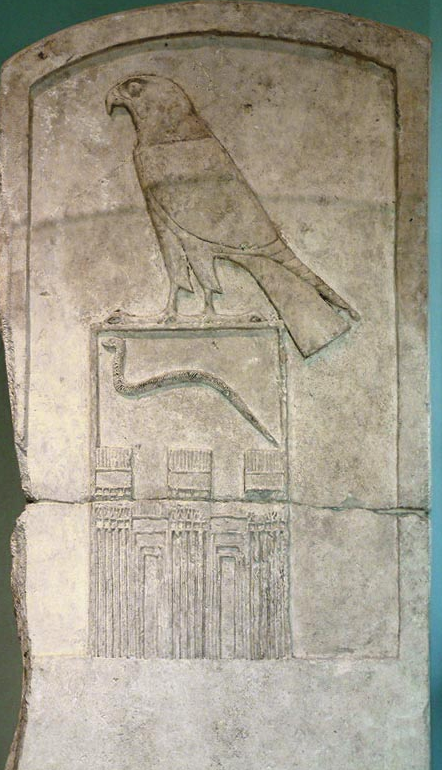
Serekh of Djet, also known as Wadji, Wadj, Iti and Oenepes, from the 1st dynasty, preserved in the Louvre. "A serekh was normally used as a royal crest, accentuating and honouring the name of the pharaoh. Its use can be dated back as early as the Gerzeh culture (c. 3400 BC.). The hieroglyphs forming the king's name were placed inside a rectangular extension atop the serekh, which represented the royal courtyard. Additionally, the falcon of the god Horus, or in a few cases the Set animal, topped the serekh, showing the celestial patron of the named king.[1][2][3]"